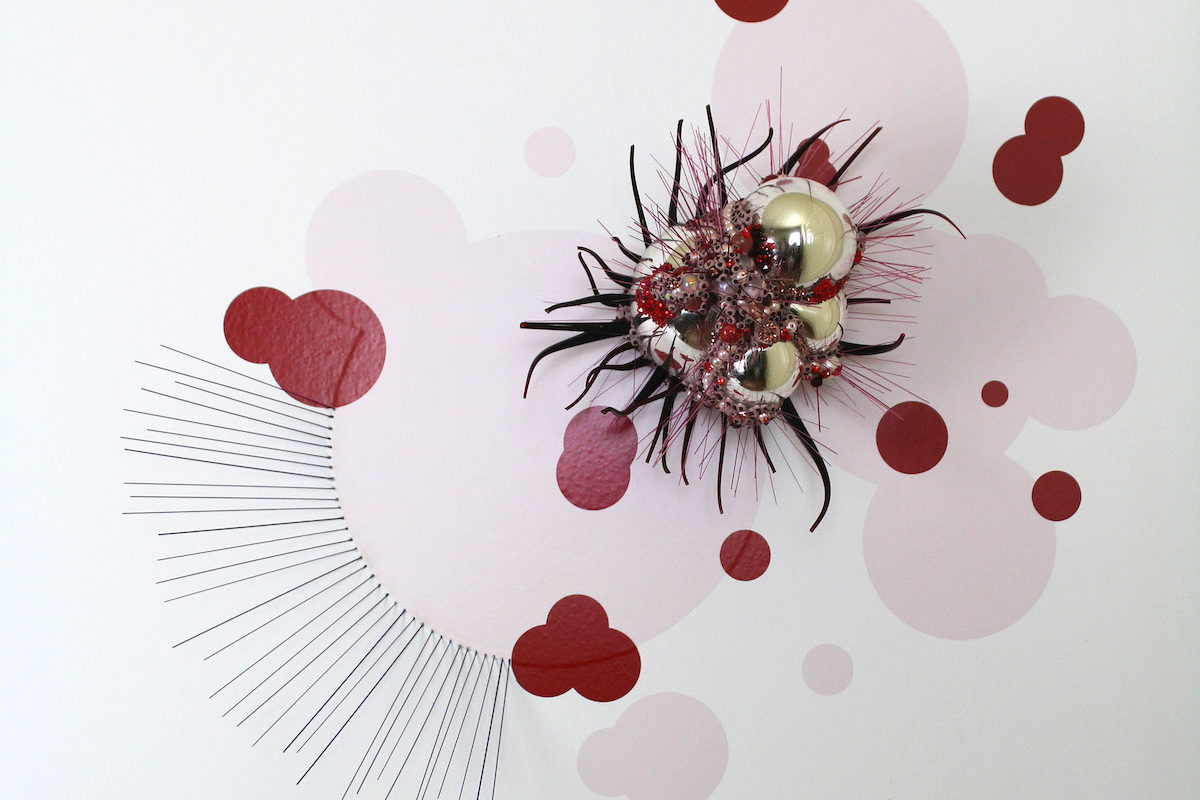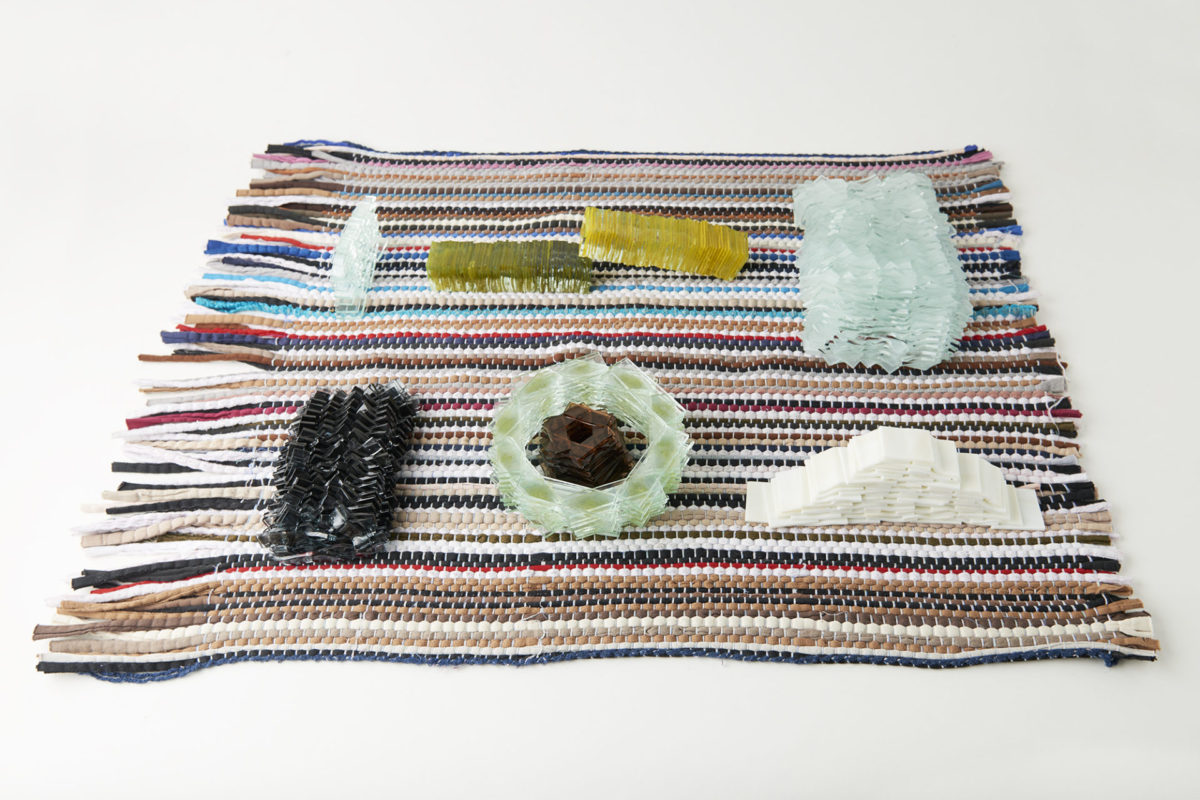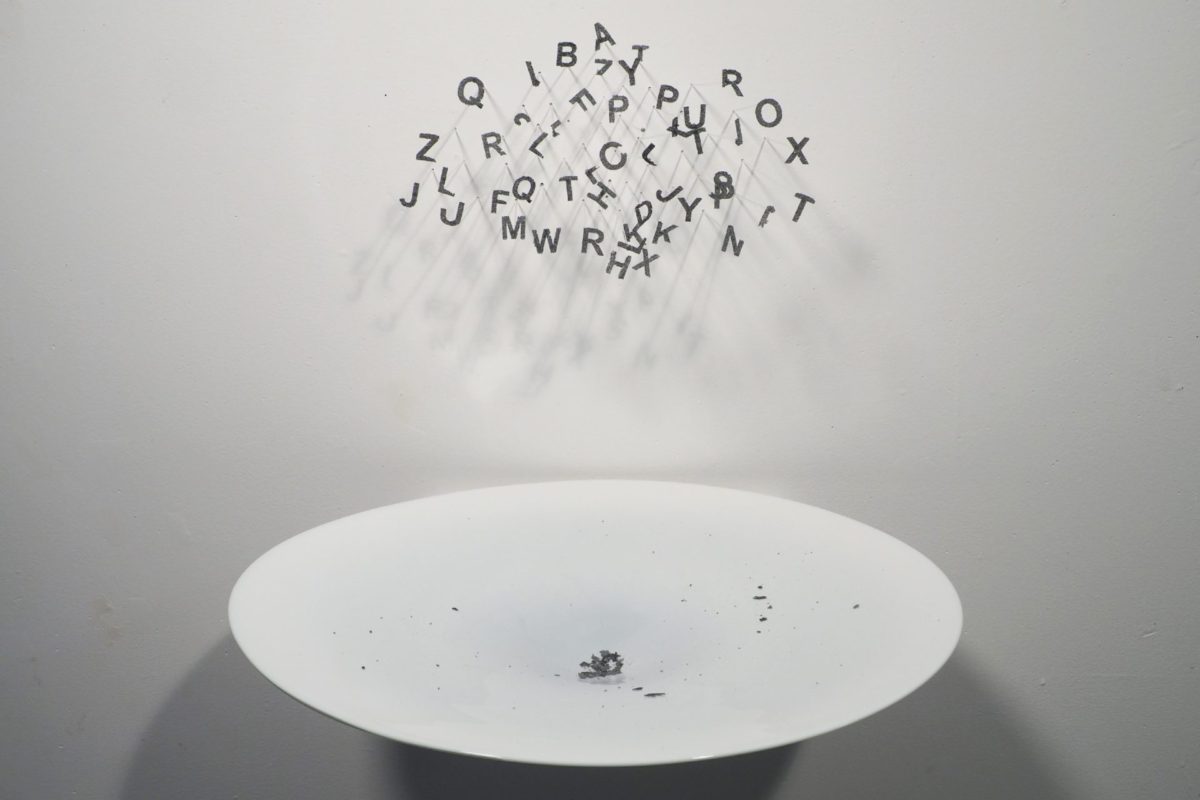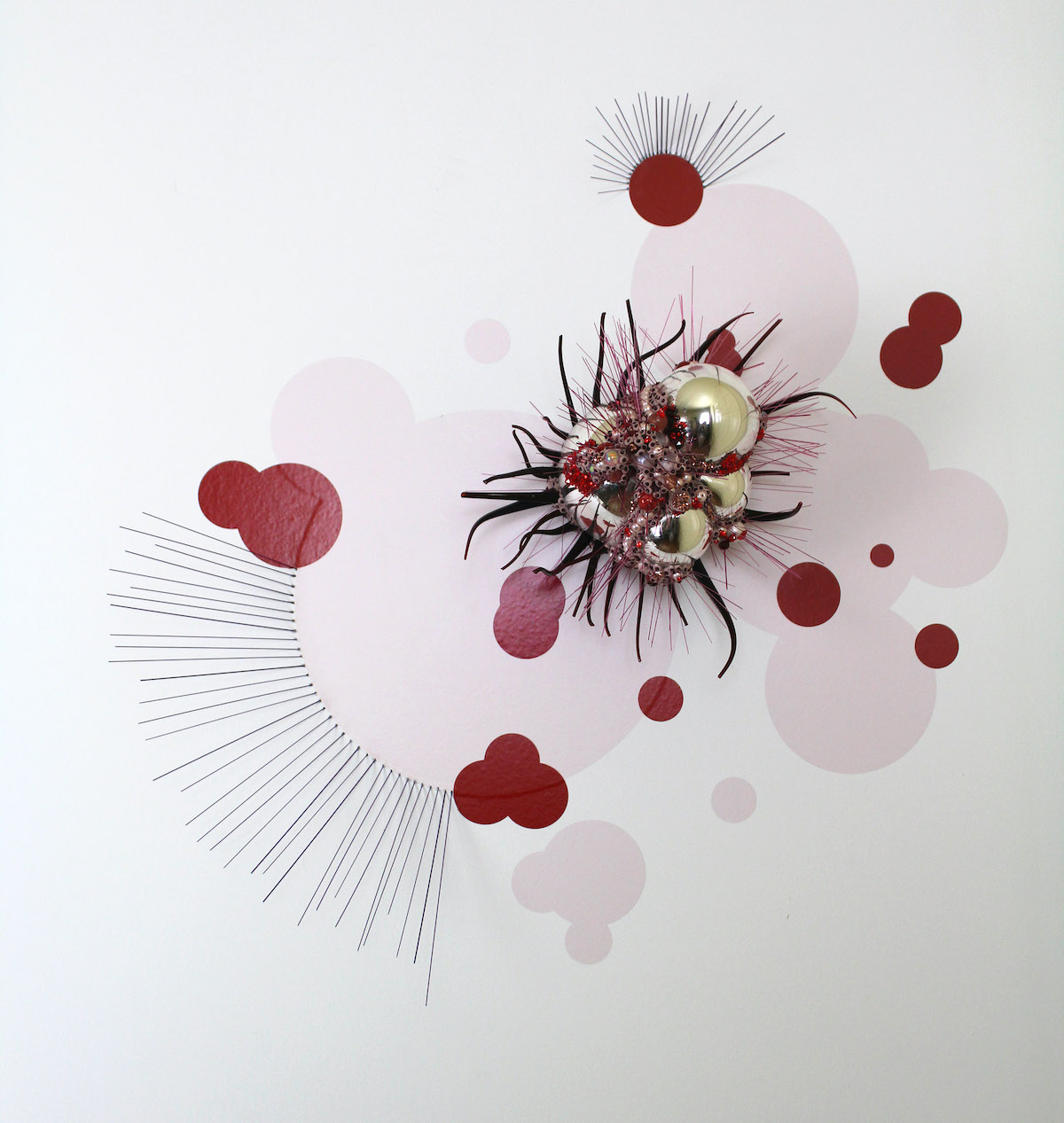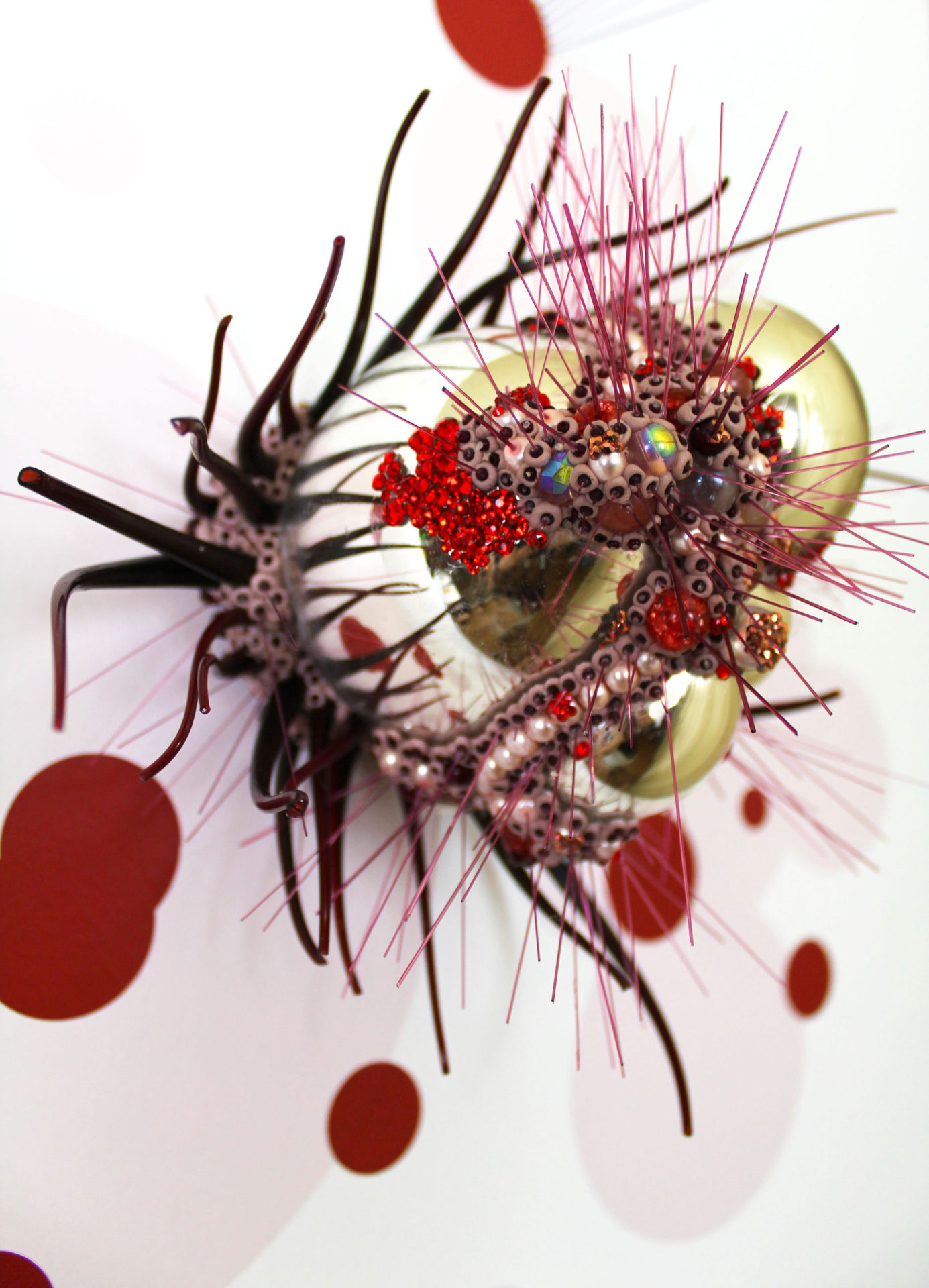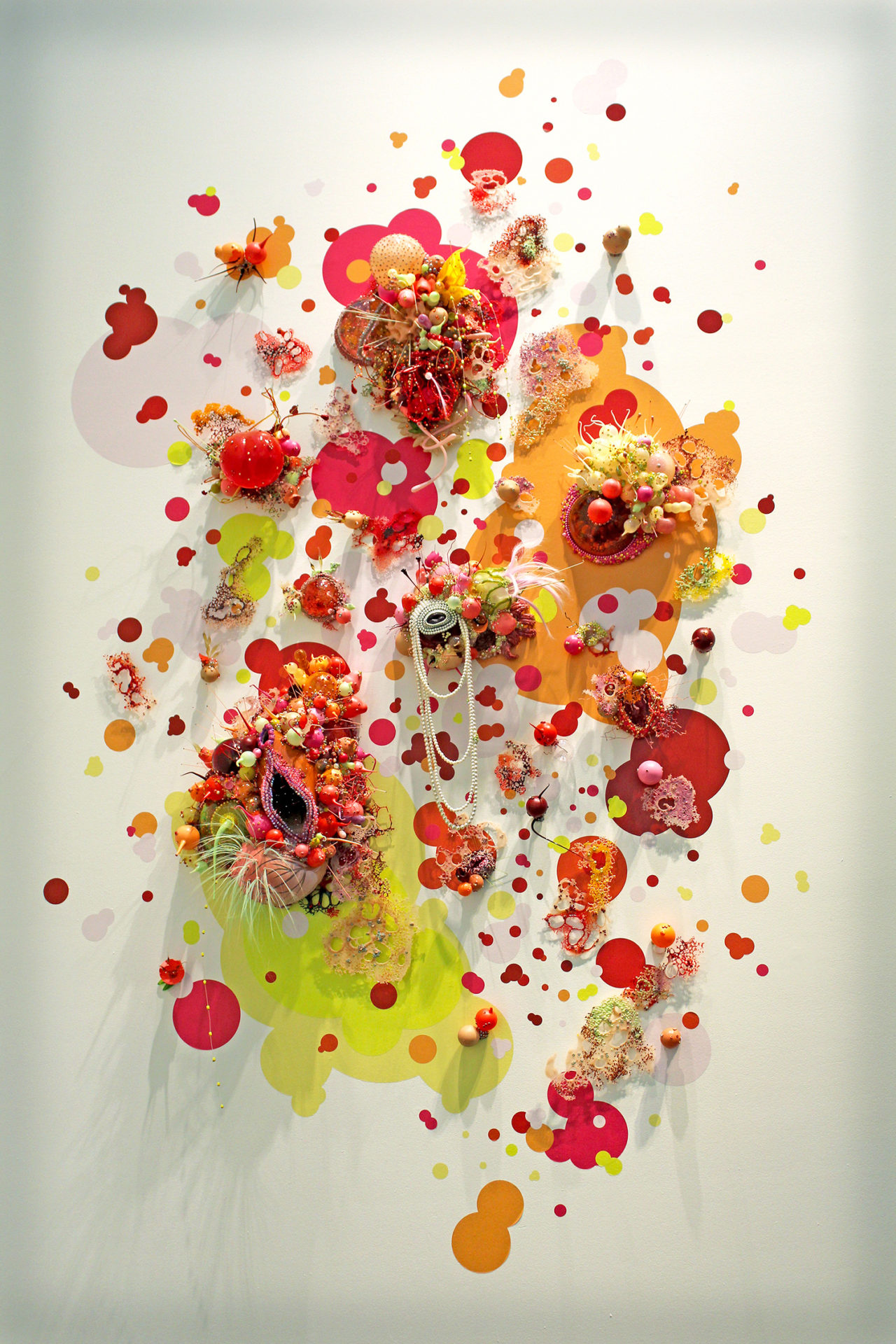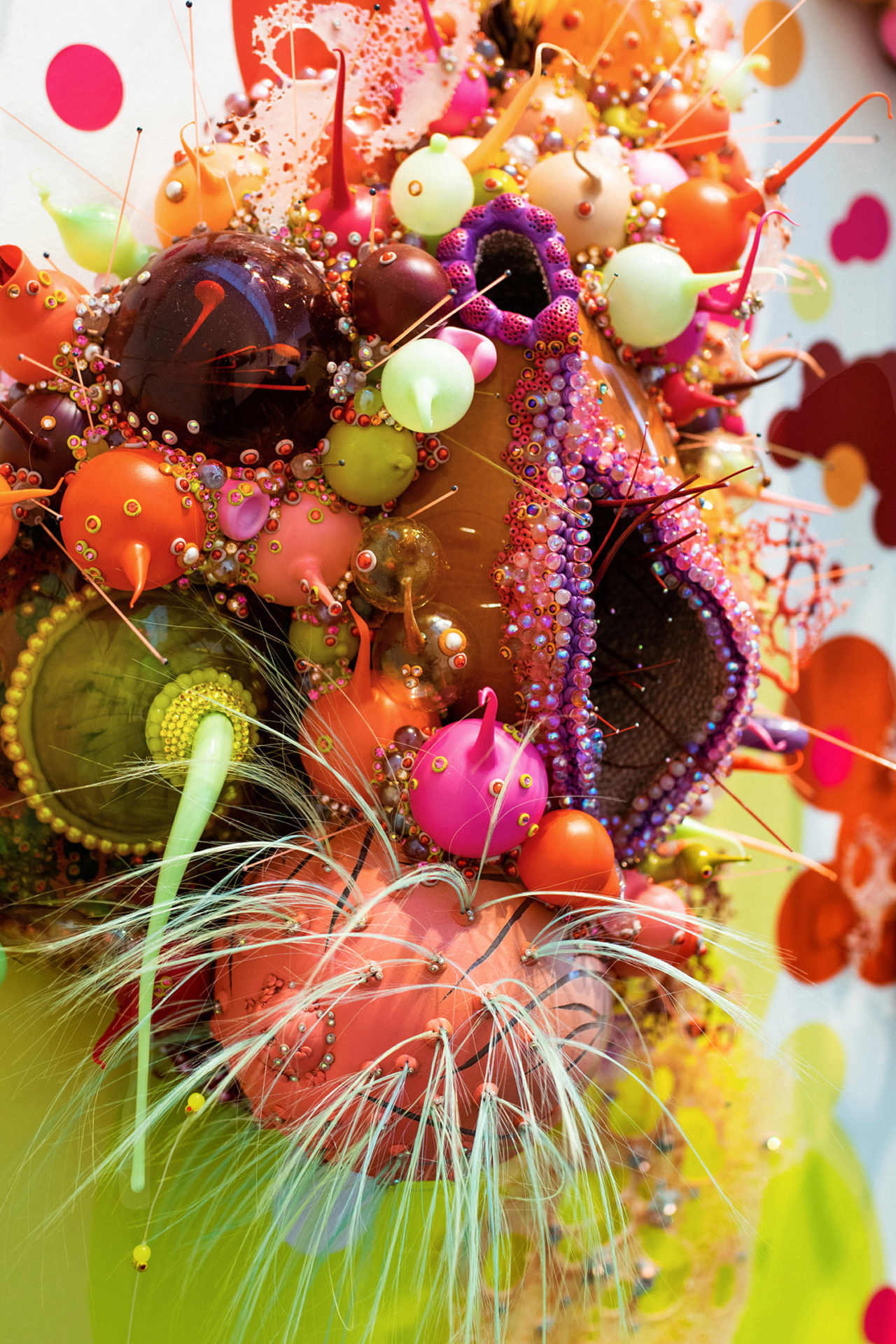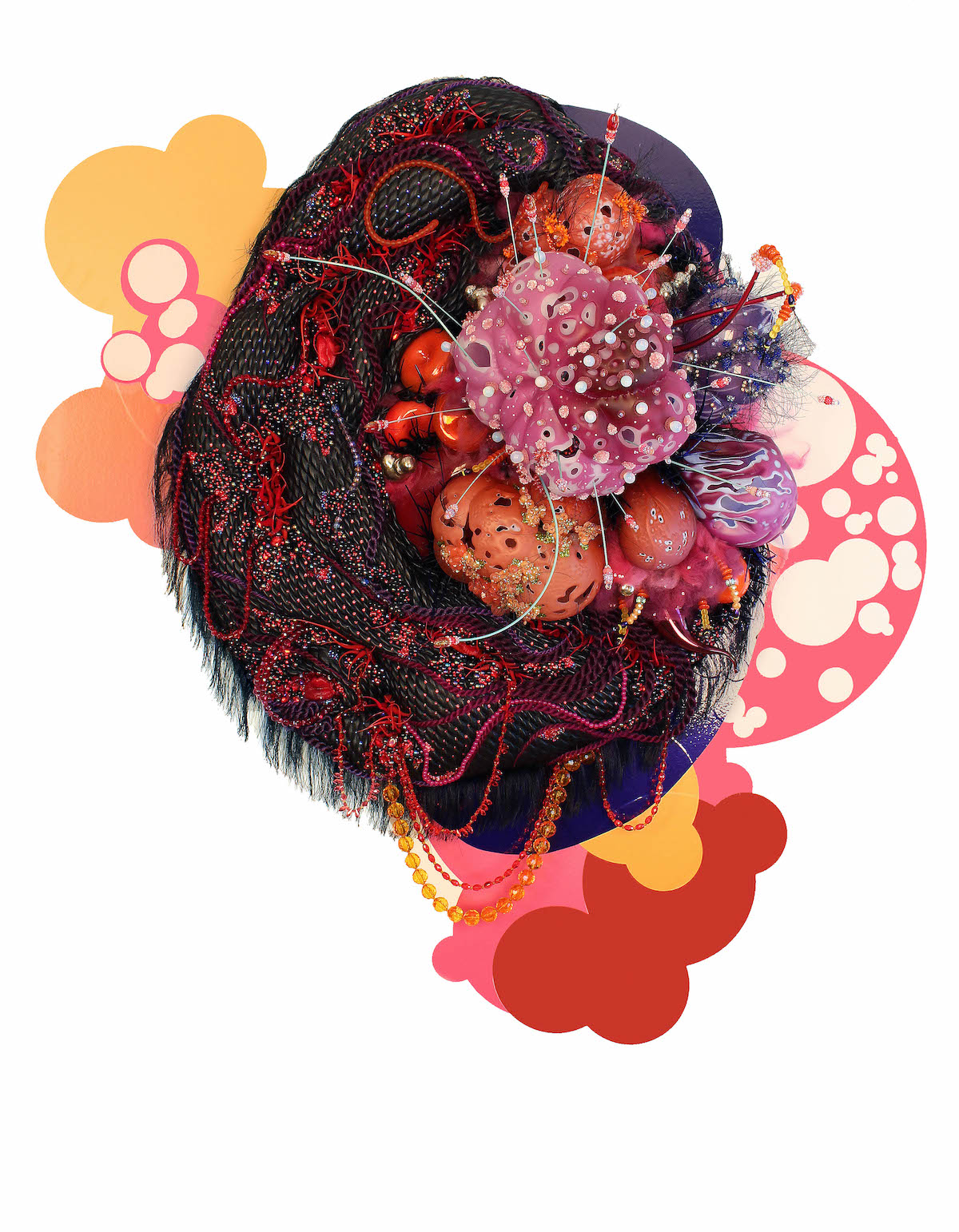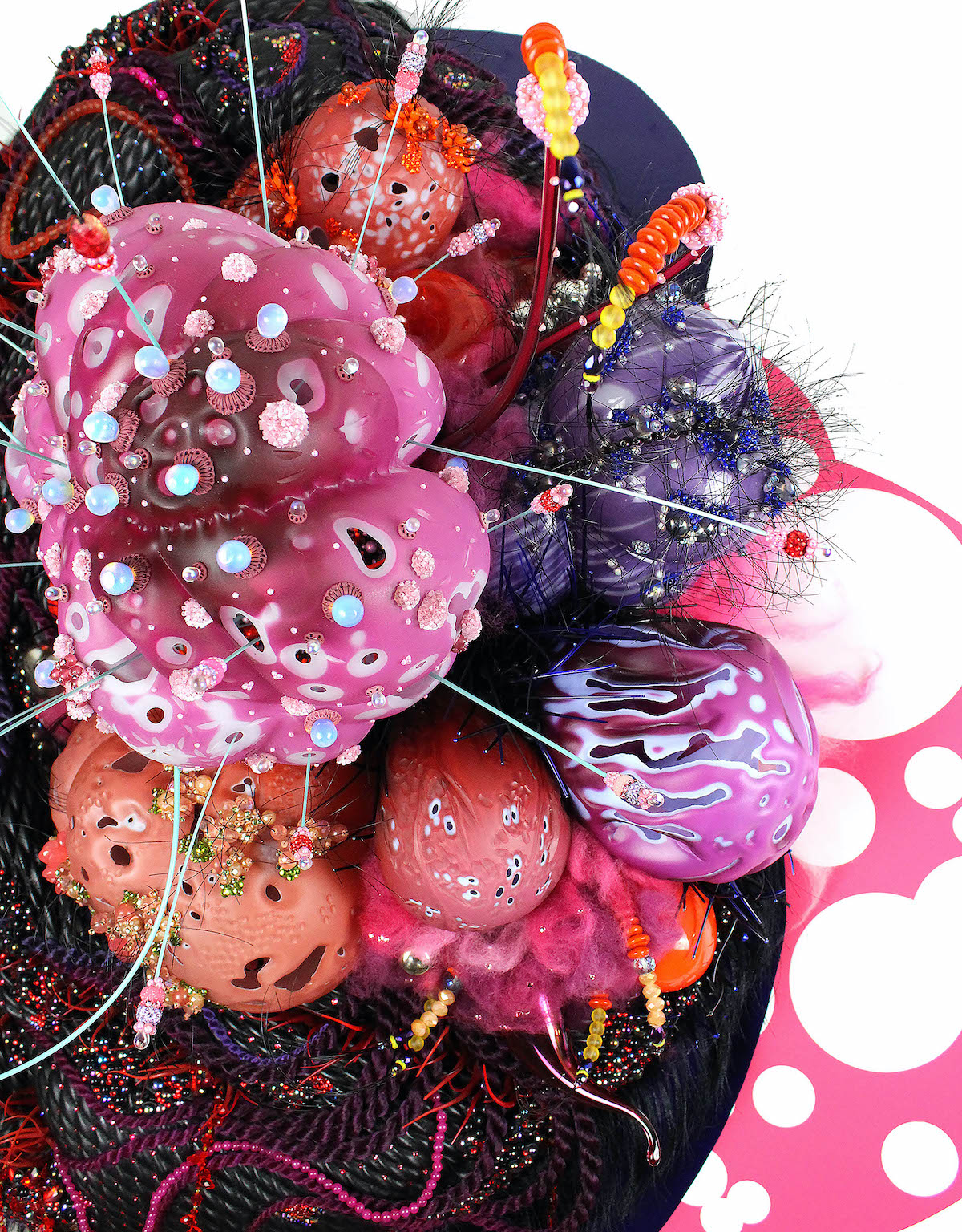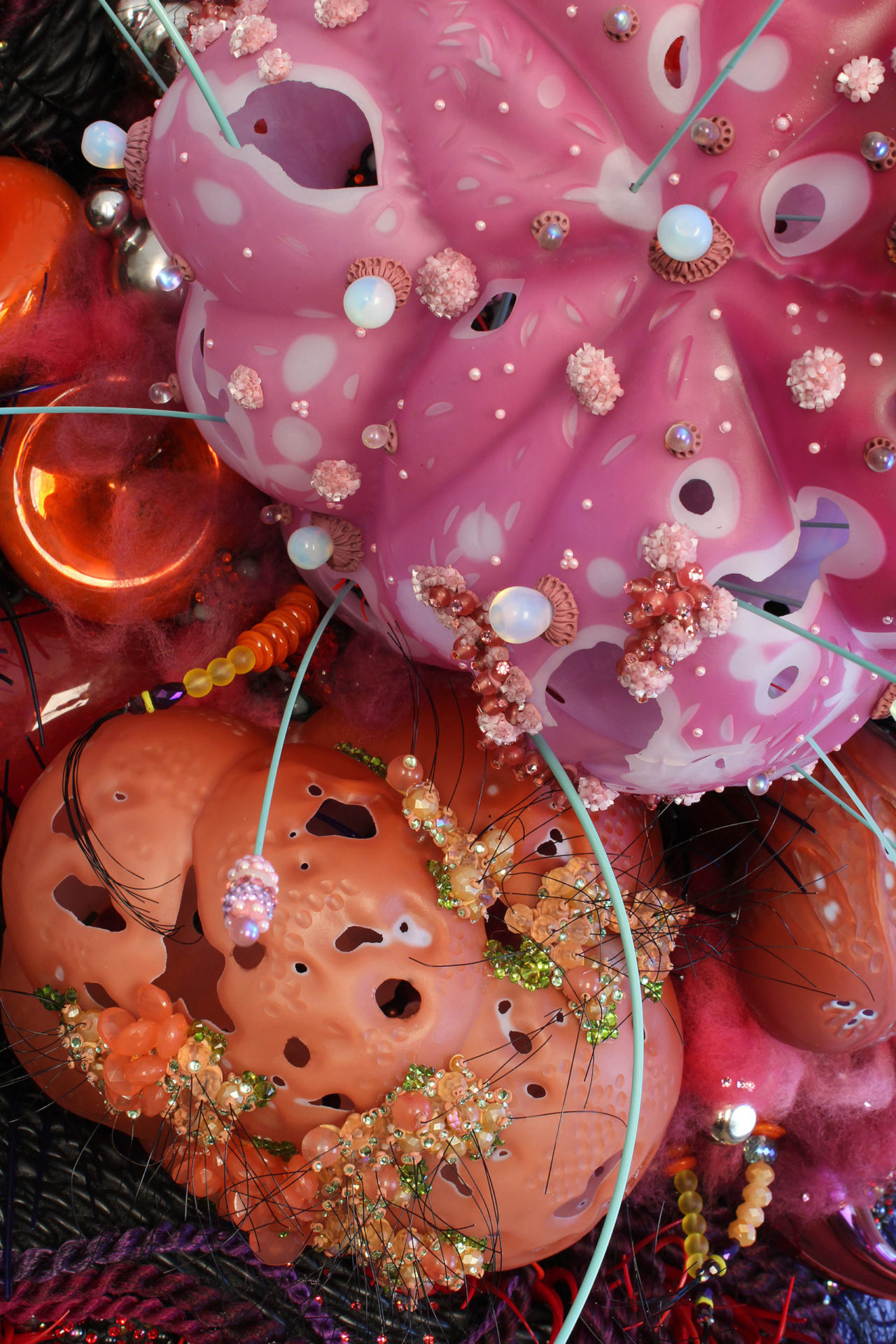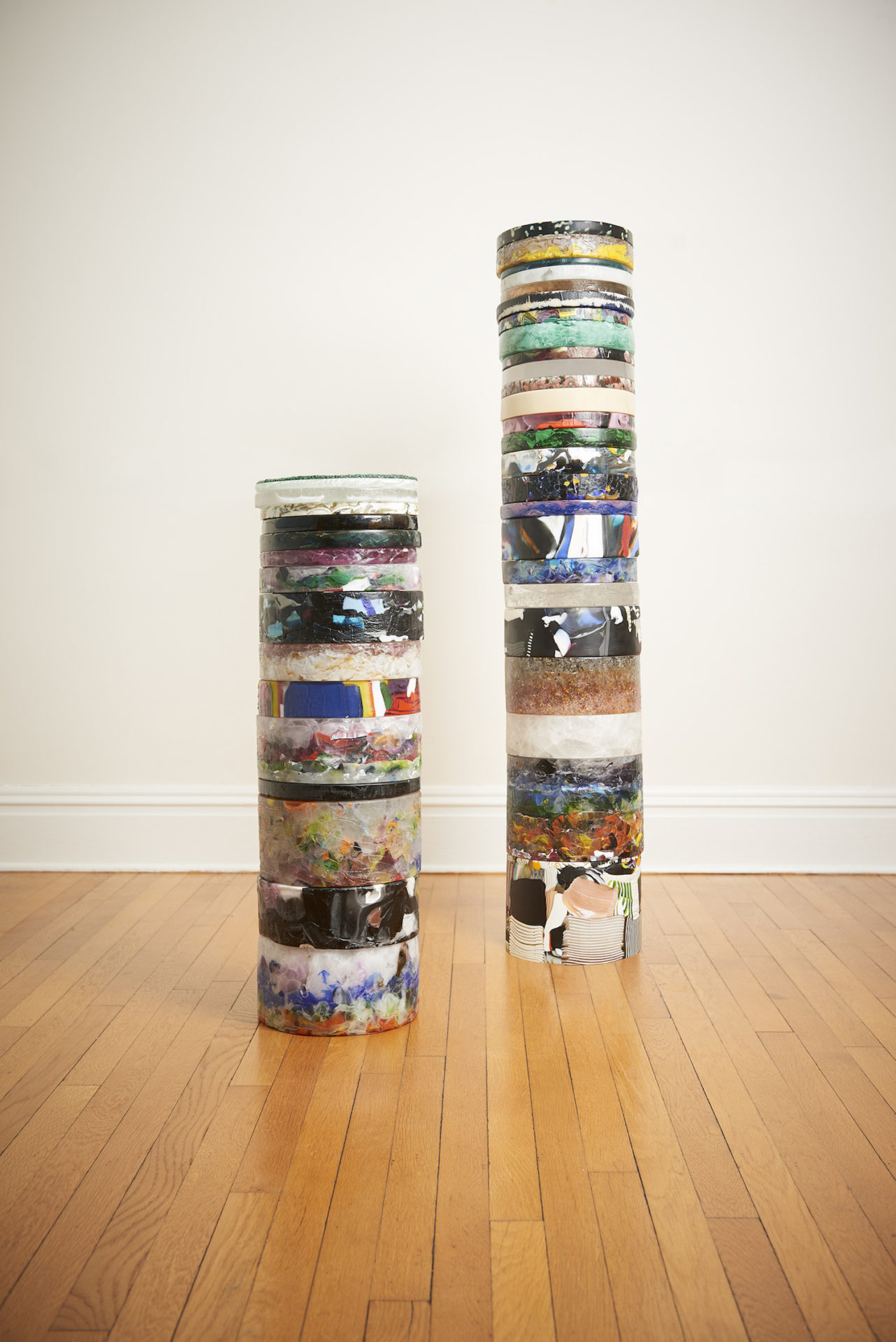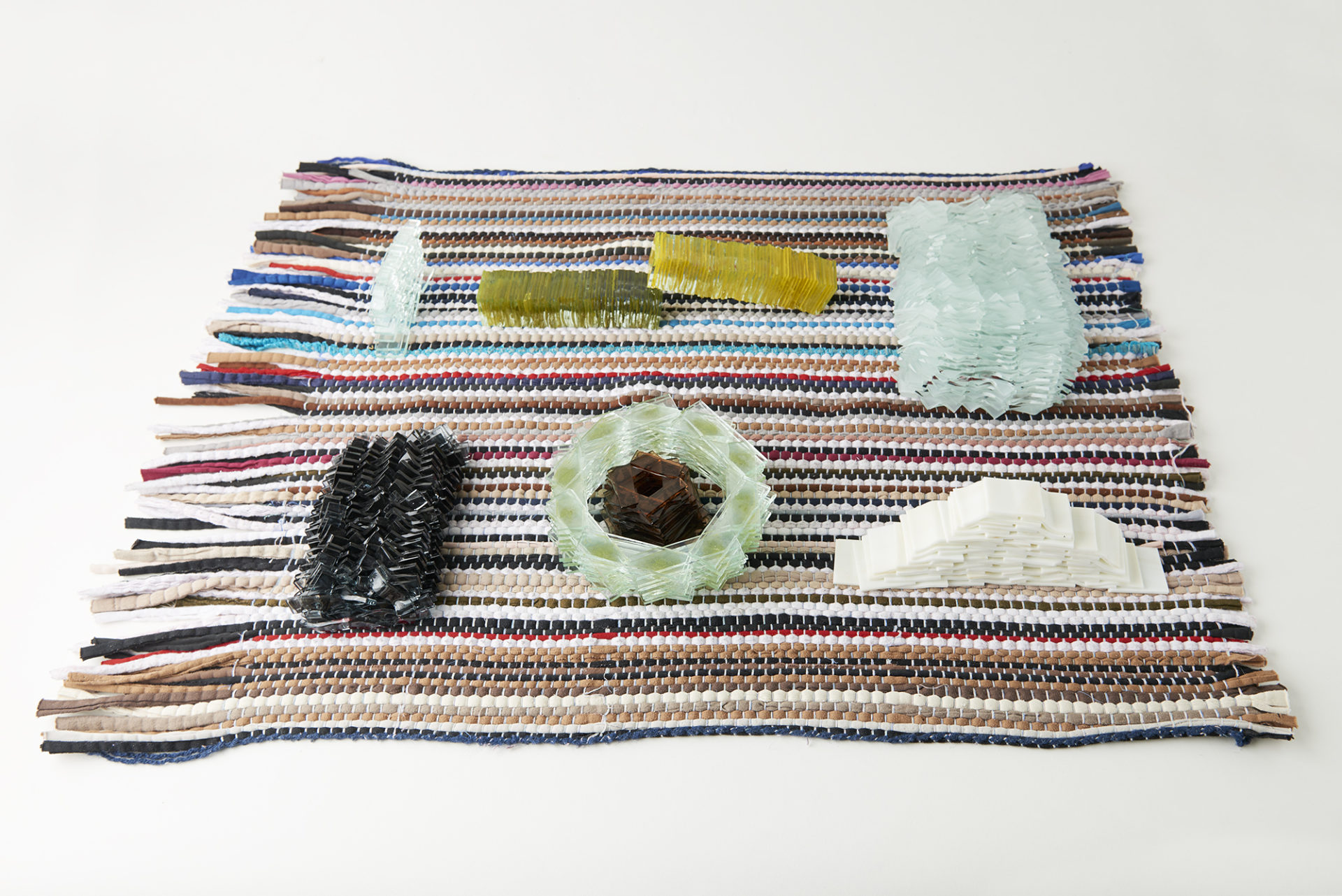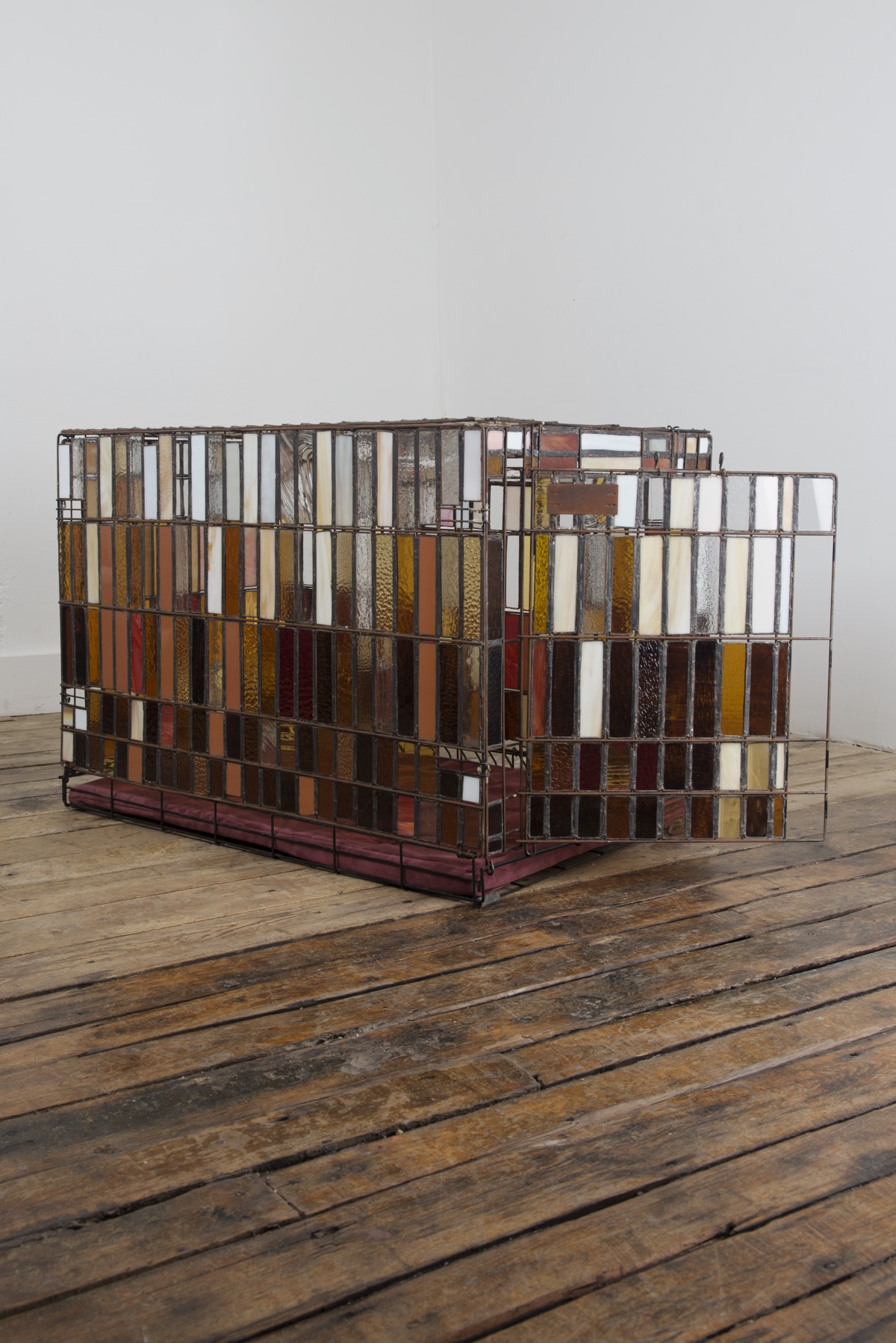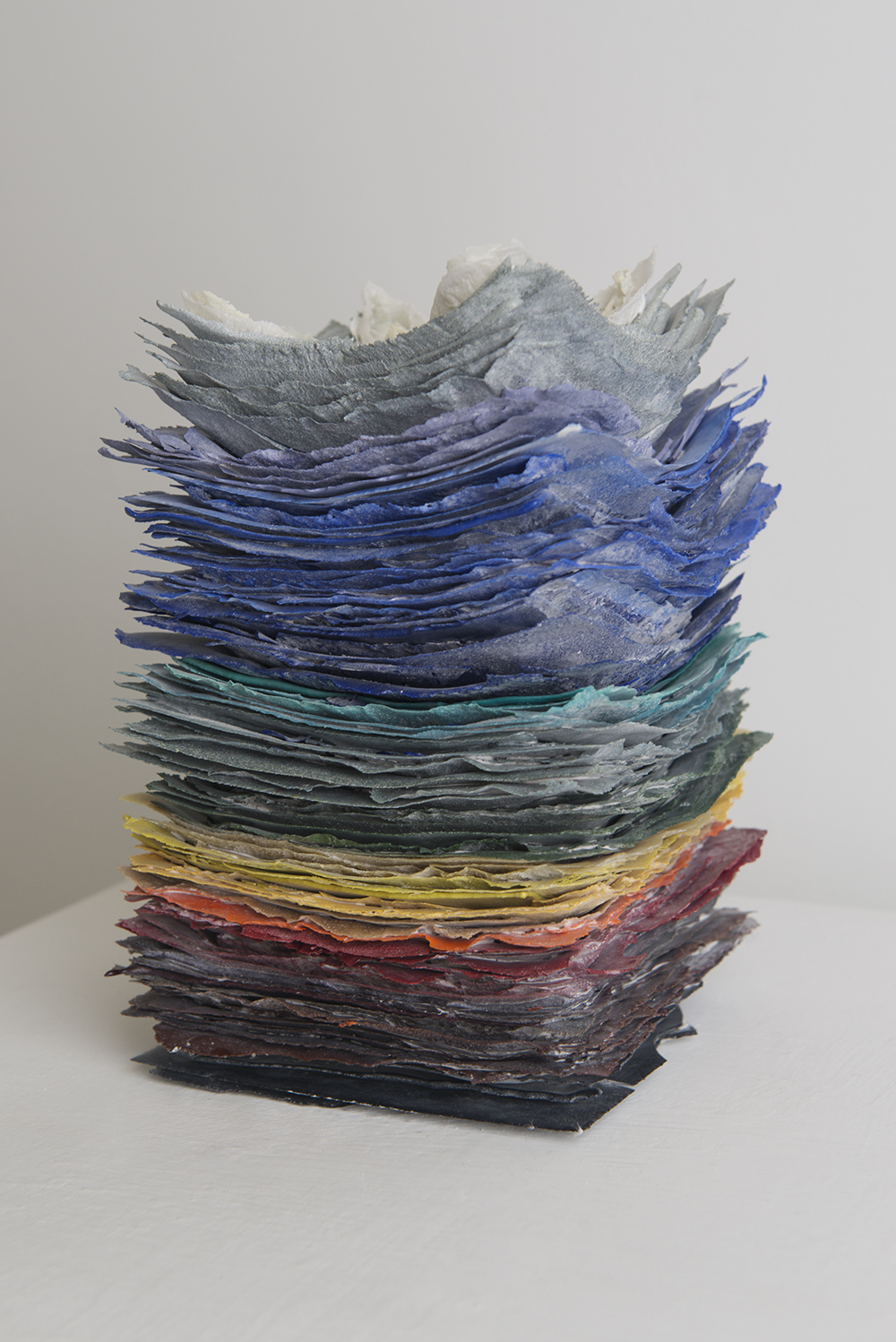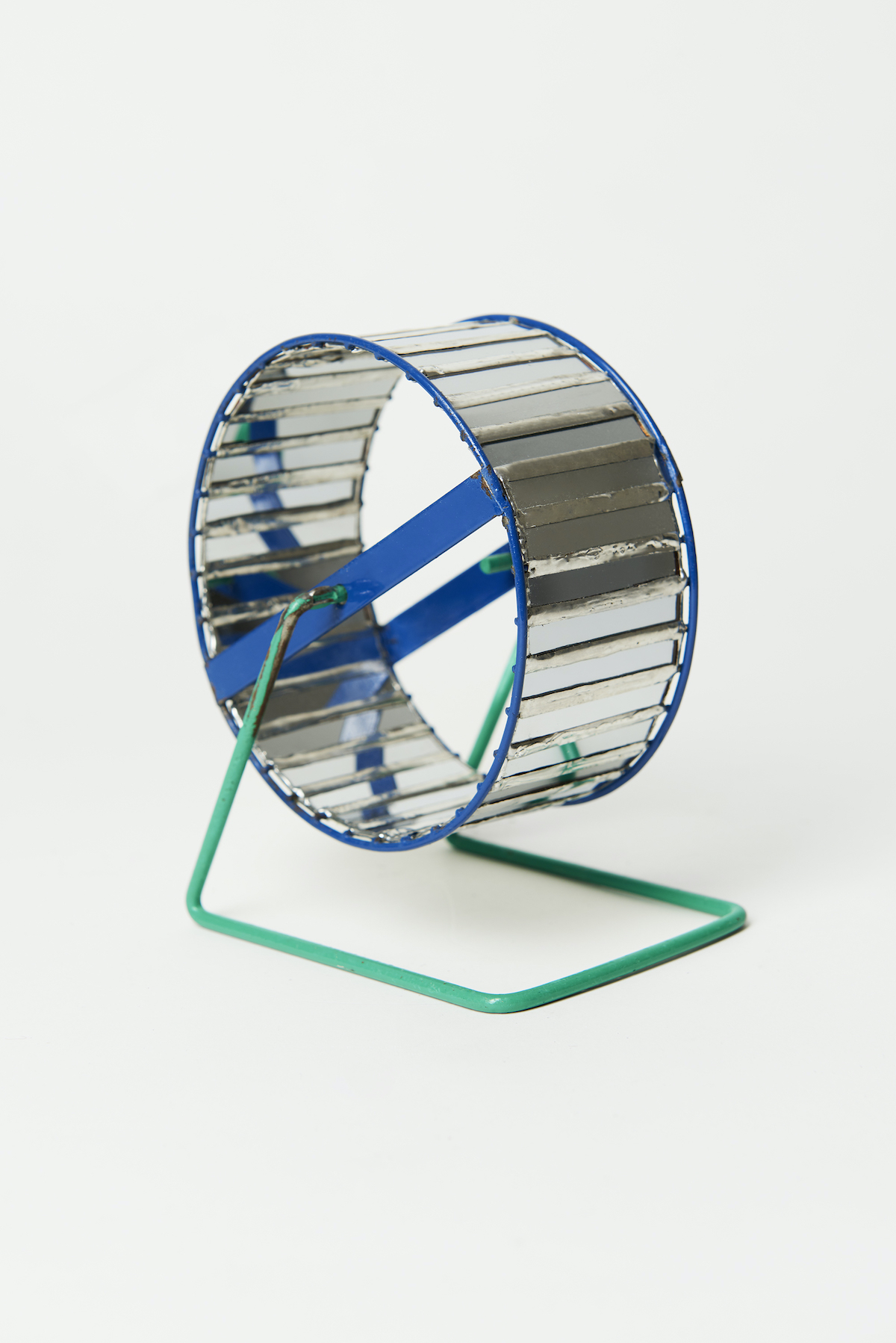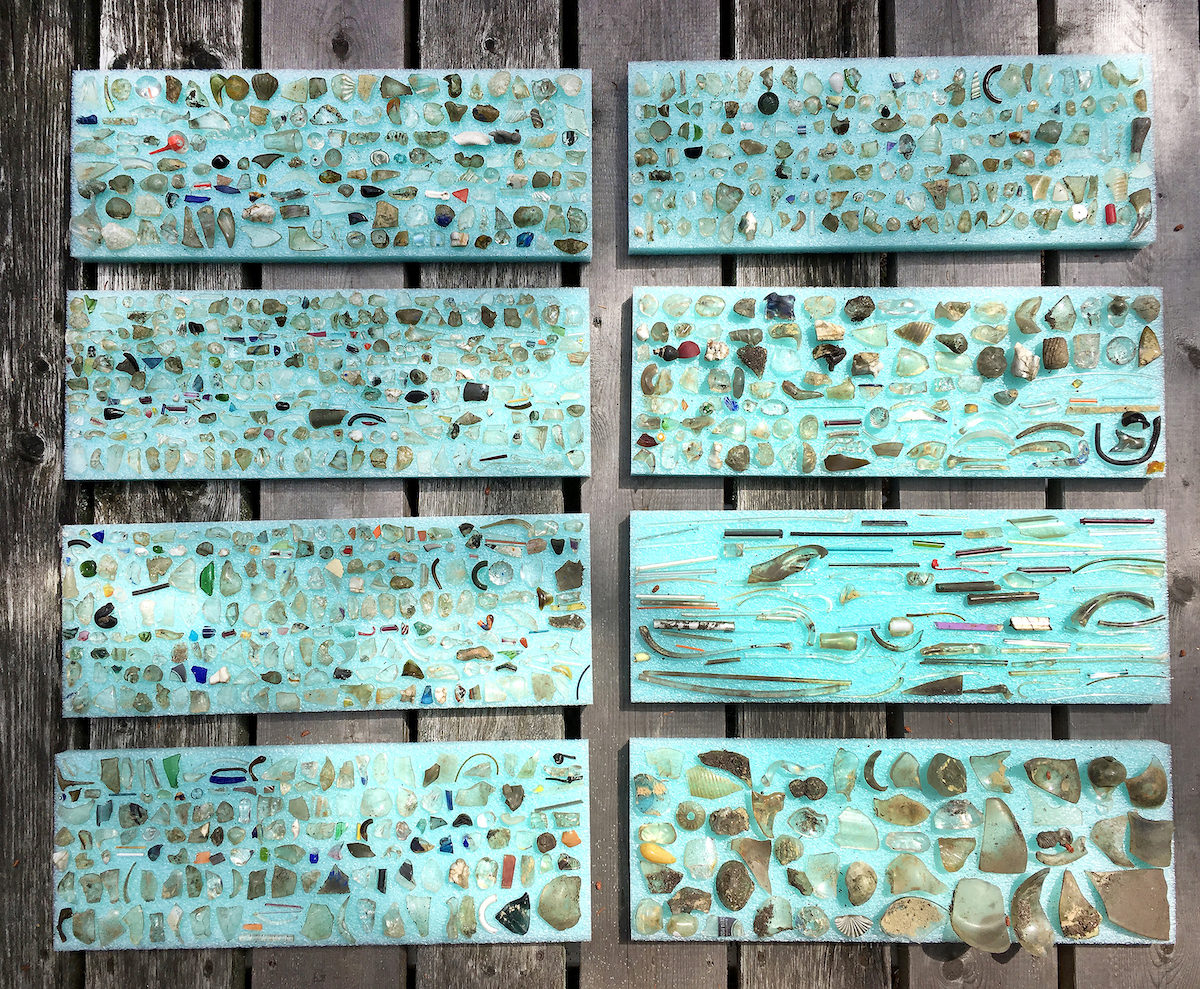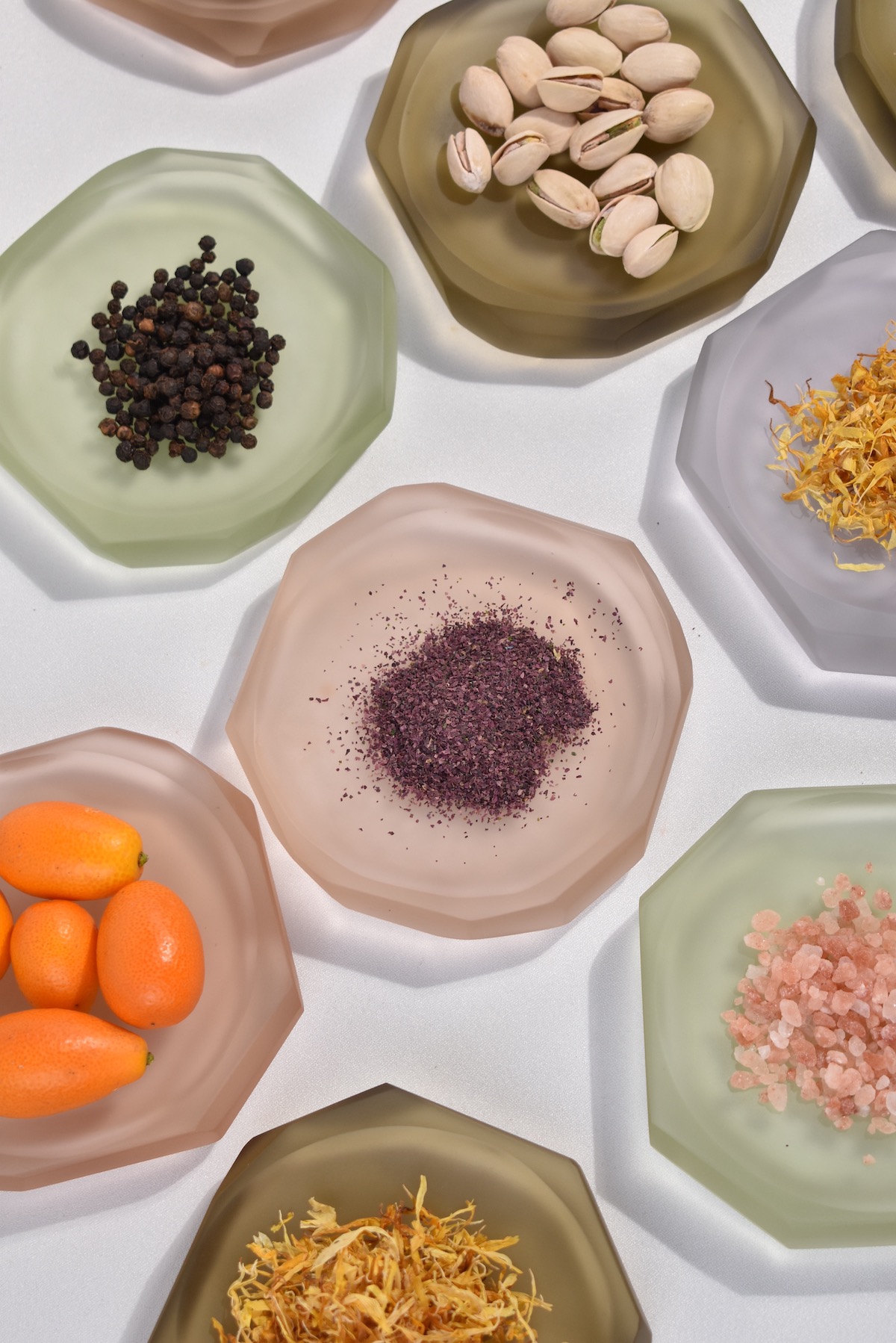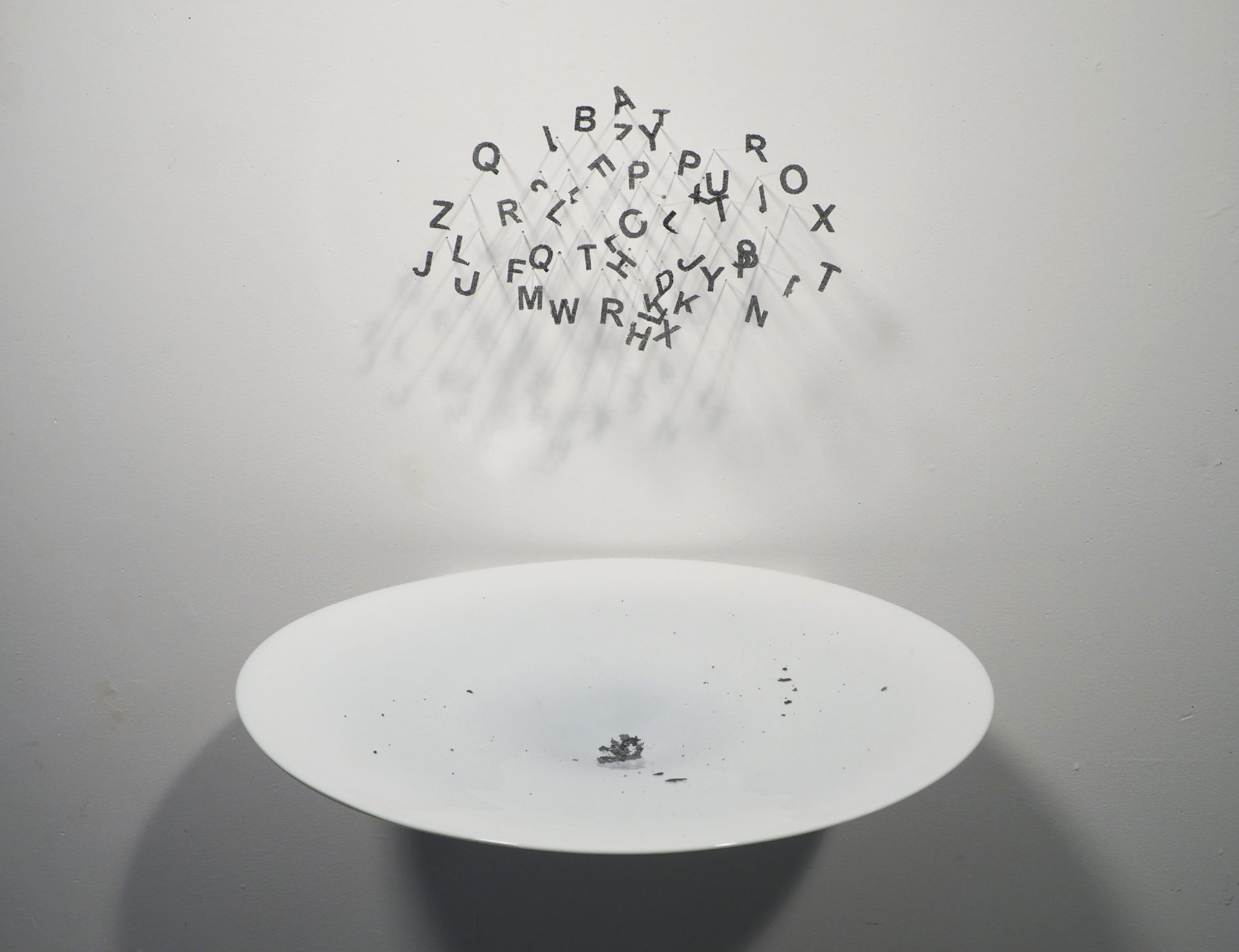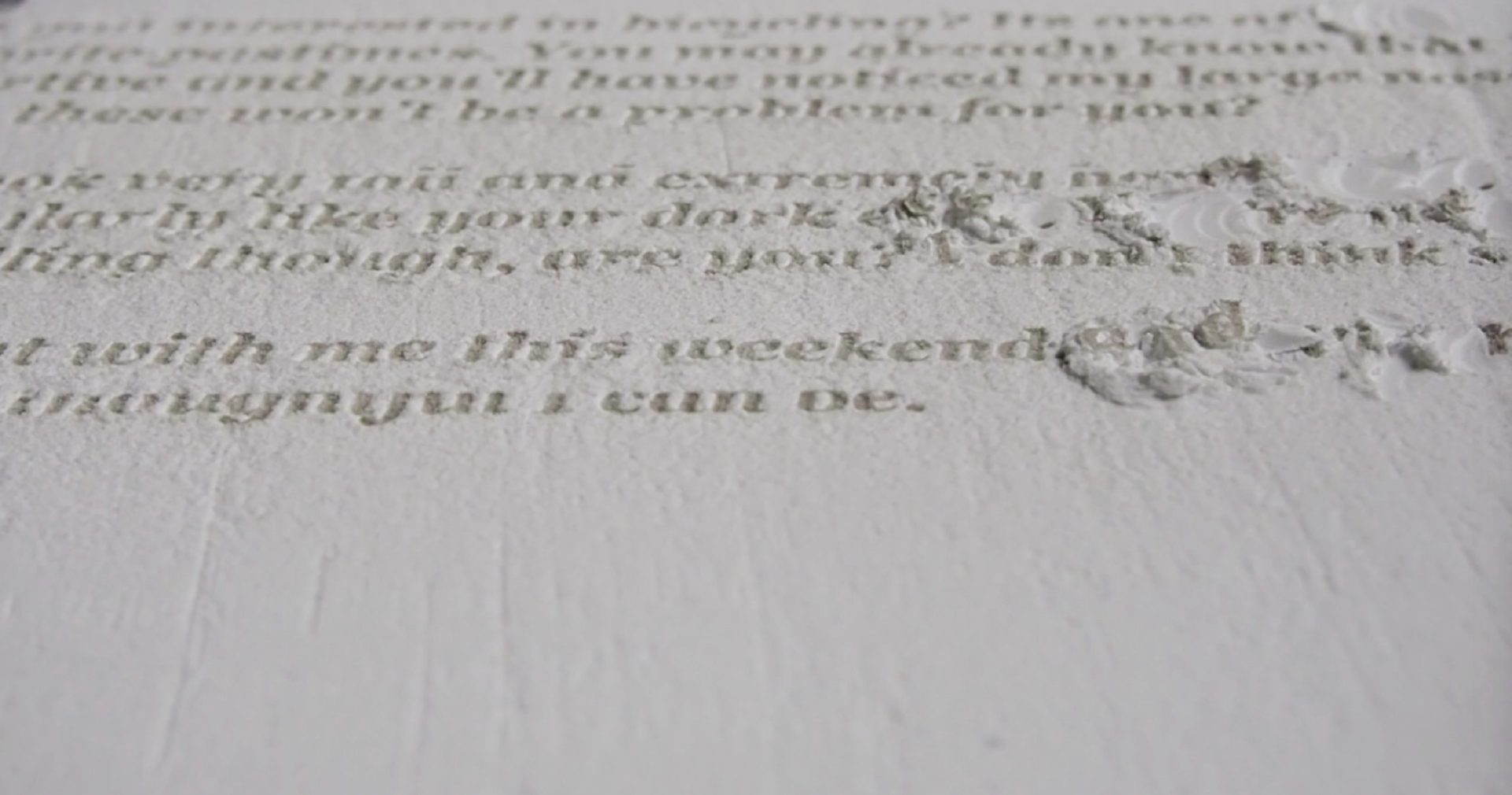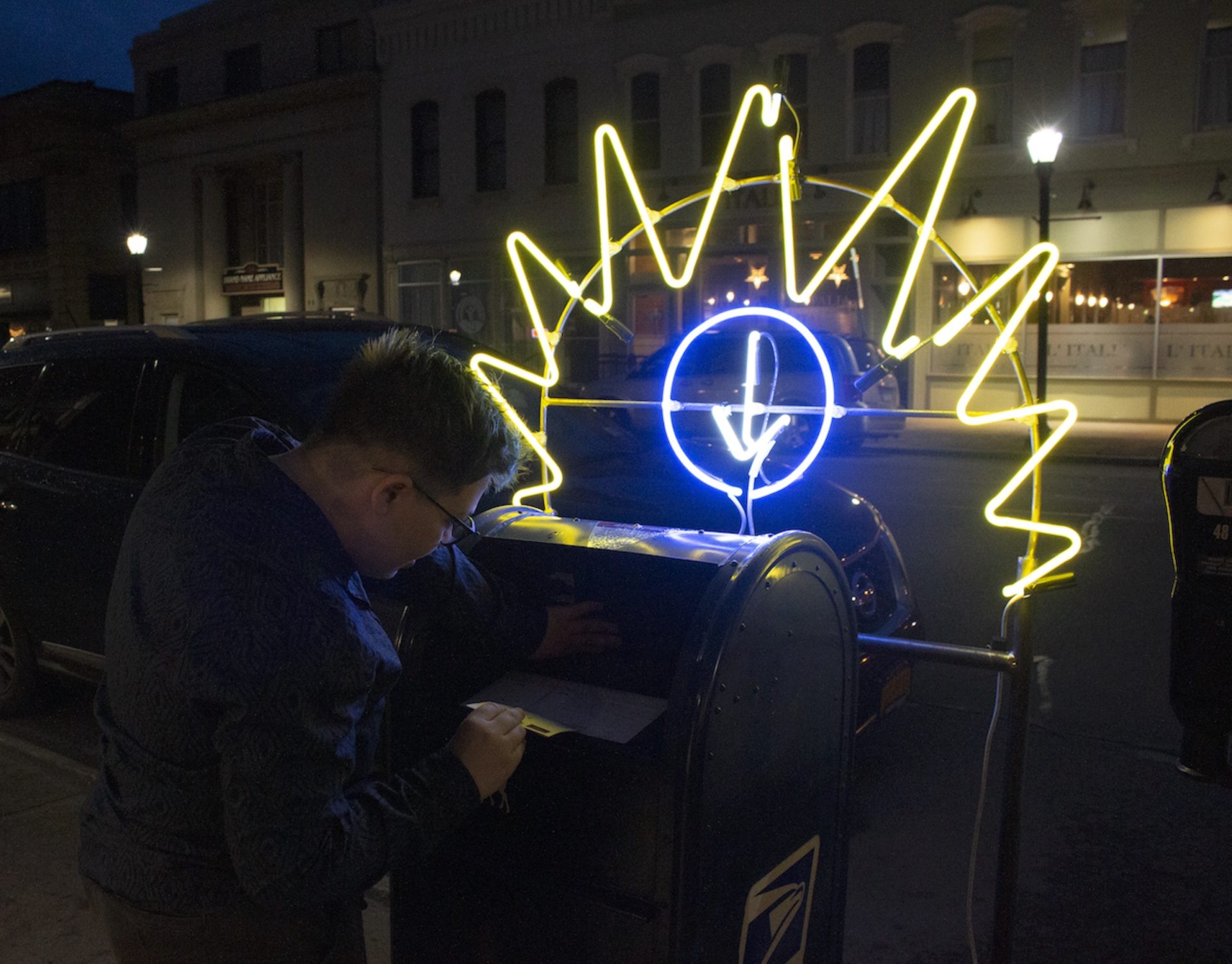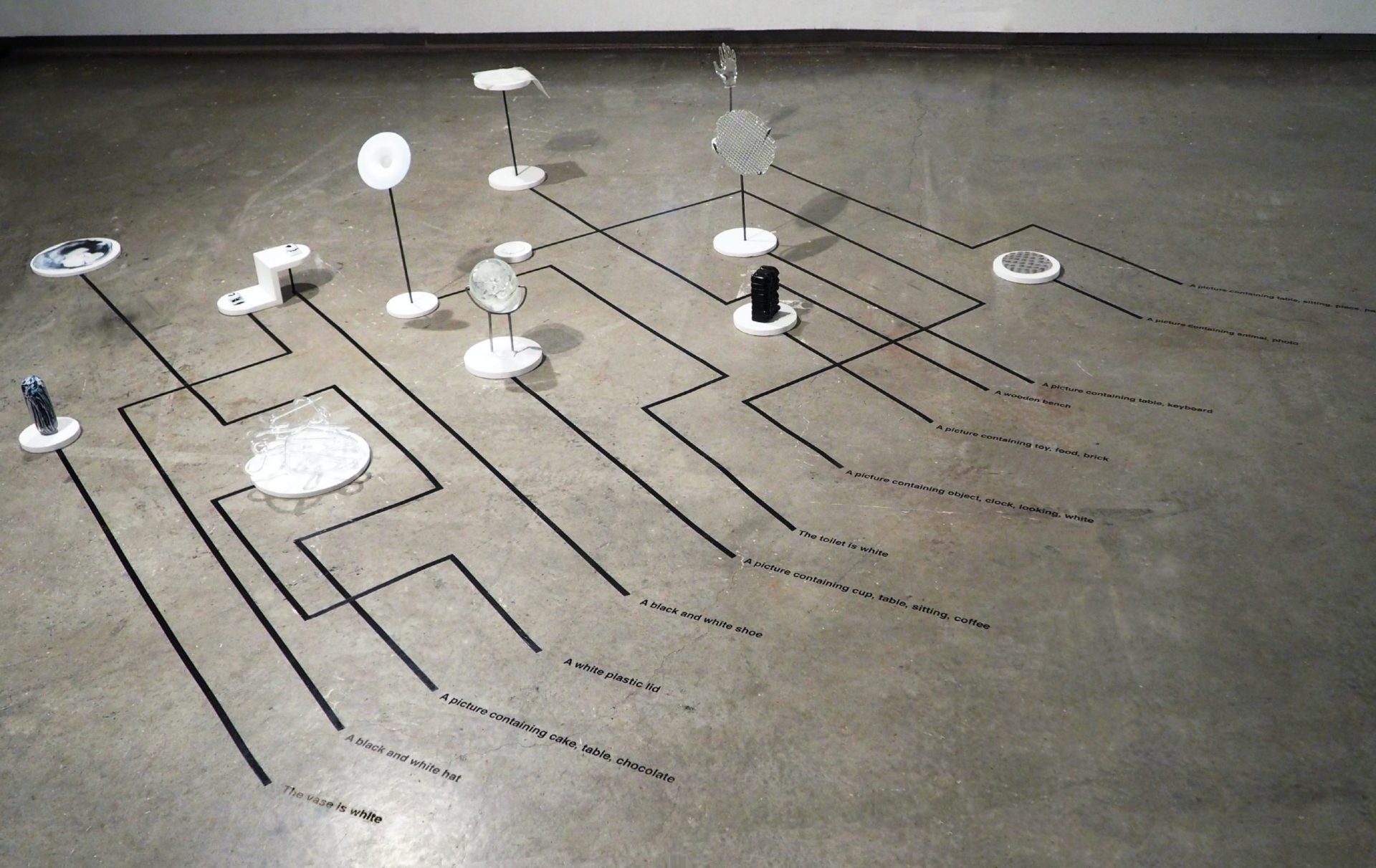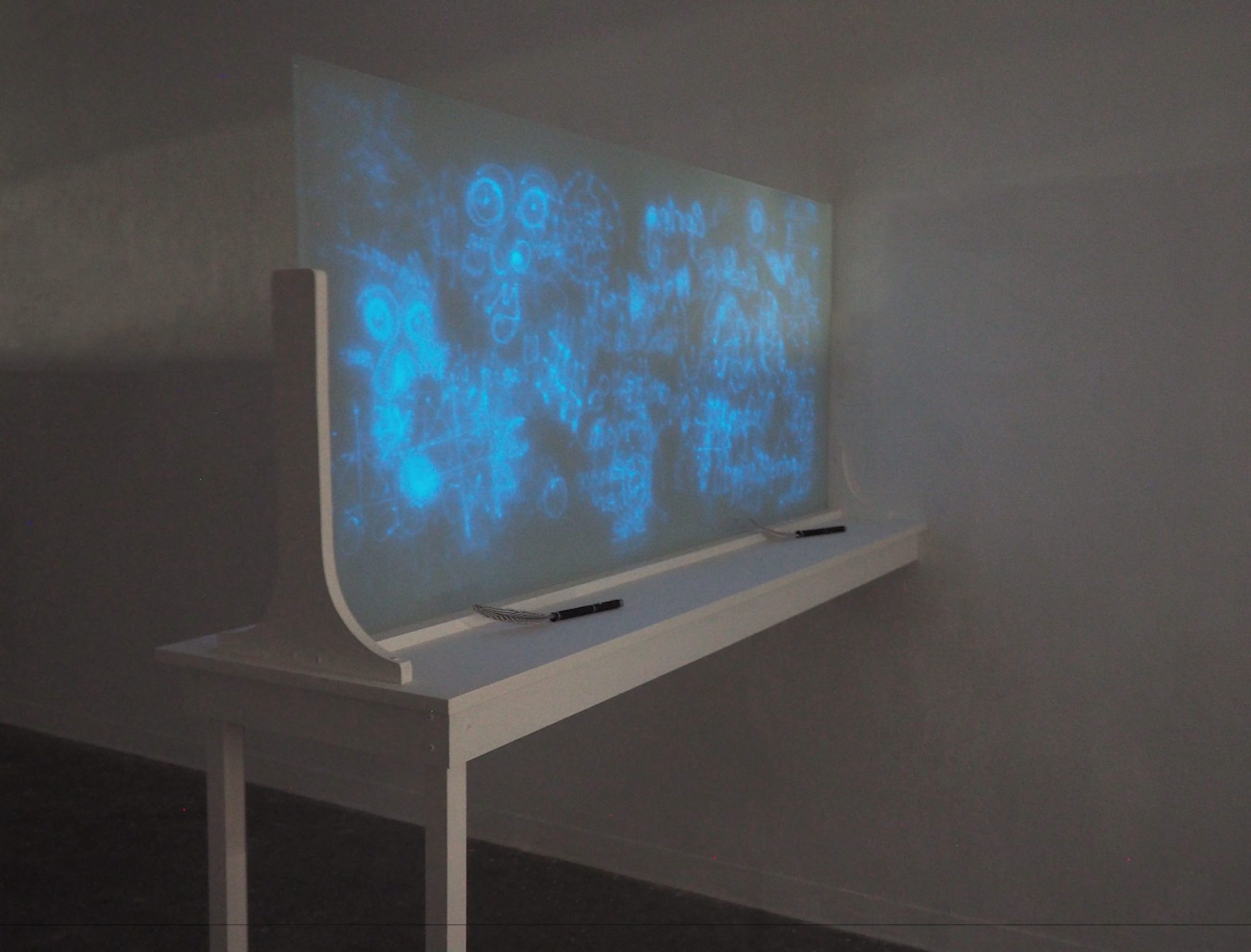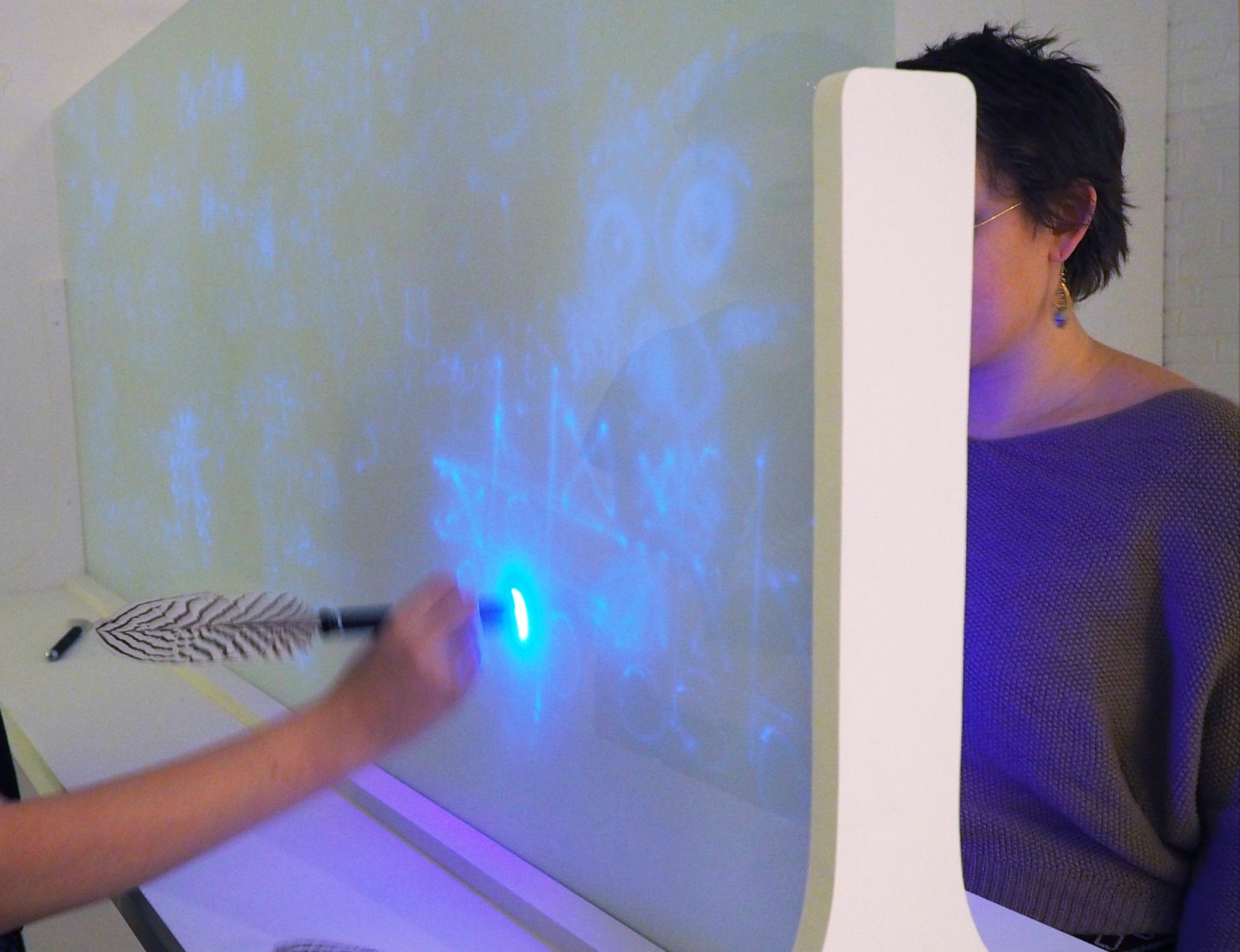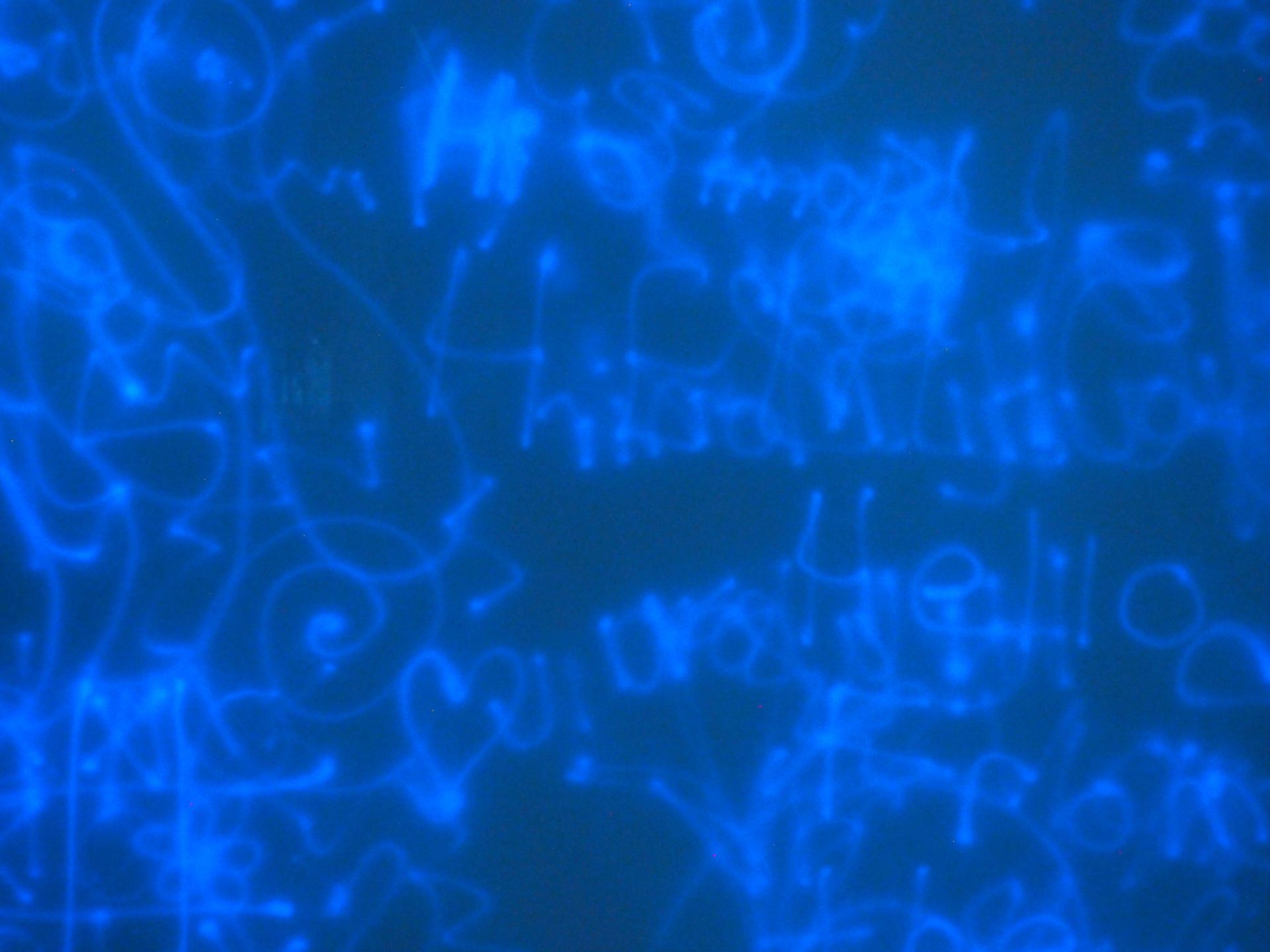Out of 38 nominated artists from 10 different countries, Bri Chesler, Morgan Gilbreath, and Erin Hoffman were selected to receive the 2021 Saxe Emerging Artist Award because of their fresh and unique approaches to working with glass.
Explore the 2021 Saxe Emerging Artist virtual exhibition!
Bri Chesler
ARTIST STATEMENT
Desire has shaped our insatiable drive and behavior. It’s a part of the human experience that is both cultural and biological. We have become hedonistic and overcome with excess; using abundance to fill the voids left behind by our superficial fixations. Inspired by moments of intimacy that blur the line between our carnally driven desires and the hunger for empathy, I try to capture the intoxicating lure of indulgence and the vulnerability it inflicts on our fragile nature. Drawing from the wild and erotic character of the natural environment, I abstract forms found both in biology and botany reflecting on cultural obsessions of beauty and desire.
My artistic practice revolves around using excess scrap material to create multiples, manifesting the work from the waste of overabundance. Maintaining a glass focus while using a multidisciplinary approach, allows me to emphasize qualities found in both materials that translate a similar idea or aesthetic. This diminishes the limitations of material identity and develops an organic origin for each piece. The aesthetic of my work is wild, an overindulgent visual buffet of objects and textures displayed as infectious anatomies. Overly textured and embellished, the facades of these forms are a distraction from their pungently visceral contours, reflecting on our gluttonous obsession with desire. The identity of these pieces remains elusive, inviting the audience in for an invasively intimate examination of detail, emphasizing the fragility not only of the work but the encounter. By creating sculptures that play with and mock the viewers’ inability to control their attraction, I aim to capture the visceral experience of our carnal nature as freakishly alien and indifferent. Unveiling the awkward, comical, and grotesque moments of desire, by flirting with the introverted perversions of being human.
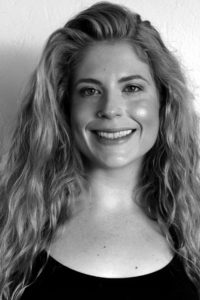 Bri Chesler is a multidisciplinary artist focusing on three-dimensional design and sculptural installation. During her studies at the Kansas City Art Institute, a strong interest in transparency and molten media led her to explore glass. Chesler’s work is known for its nontraditional approach, combining different glass techniques with other media. By fusing similar elements found in biology and botany, she creates forms that ‘flirt’ with the audience, exploring ideas of intimacy and desire. Bri Chesler was a 2019 Pilchuck Emerging Artist-in-Residence and recipient of the 2020 Chihuly Gardens and Glass Anniversary Scholarship.
Bri Chesler is a multidisciplinary artist focusing on three-dimensional design and sculptural installation. During her studies at the Kansas City Art Institute, a strong interest in transparency and molten media led her to explore glass. Chesler’s work is known for its nontraditional approach, combining different glass techniques with other media. By fusing similar elements found in biology and botany, she creates forms that ‘flirt’ with the audience, exploring ideas of intimacy and desire. Bri Chesler was a 2019 Pilchuck Emerging Artist-in-Residence and recipient of the 2020 Chihuly Gardens and Glass Anniversary Scholarship.
Morgan Gilbreath
ARTIST STATEMENT
Through a deep reverence for both material and process, my ritualistic approach to art-making seeks to blur the line between secular and sacred and encourage curiosity towards every part of the world around us.
Inspired by my background in labor-intensive crafts and my research of art and architectural history, I choose to make art with materials which hold some sort of historical and emotional weight. Glass is a substance which I often use because of its historical, archival, and transformational qualities. As a sort of artistic anthropology, I utilize the stories and associations that come with found objects to develop the meaning of my work. My materials have included glass swept up from streets, dust from the ventilation of a bible factory, blessed liturgical candles, damaged medical glass vials, and waste glass gathered from other people’s glass studios. The narratives imbued within these reclaimed materials carry over into my sculptures, alluding to an overarching history which existed long before the artwork.
I make artwork to explore how context, material, and gesture can advocate for an all-encompassing worldview in which all things can be viewed as historically, spiritually, and artistically meaningful. I want my work to reveal the immeasurable potential energy that I see within the mundane particles of our everyday existence.
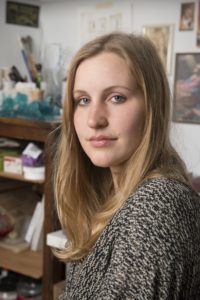 Morgan Gilbreath is a glass and mixed-media artist whose process-driven work investigates the intersections between religion, history, and labor. She holds a BFA in Glass and a BA in Art History from Tyler School of Art (Temple University) in Philadelphia. She has completed residencies at the Creative Glass Center of America (Wheaton Arts), Pilchuck Glass School, and the University of Texas Arlington. In addition to being exhibited nationally and internationally, her work is in the permanent collection at the Museum of American Glass (Millville, NJ) and the Aldo Bellini Glass Collection at Castello Sforzesco (Milan, Italy). Morgan lives and works in Richmond, Virginia.
Morgan Gilbreath is a glass and mixed-media artist whose process-driven work investigates the intersections between religion, history, and labor. She holds a BFA in Glass and a BA in Art History from Tyler School of Art (Temple University) in Philadelphia. She has completed residencies at the Creative Glass Center of America (Wheaton Arts), Pilchuck Glass School, and the University of Texas Arlington. In addition to being exhibited nationally and internationally, her work is in the permanent collection at the Museum of American Glass (Millville, NJ) and the Aldo Bellini Glass Collection at Castello Sforzesco (Milan, Italy). Morgan lives and works in Richmond, Virginia.
Erin Hoffman
ARTIST STATEMENT
We are connected more than ever and can affect each other at any moment, like a tap on the shoulder. The complexity surrounding conversation––when text falls short, messages overlap, and meaning is distorted is fascinating to me. My work investigates language and technology in our continually developing digital culture. We have become more aware of communication as a vital human need, especially during our current global crisis. Whether we are communicating next to each other or across the country, there is only harm in the social distance of not communicating at all.
I am interested in the effects of communicating through time and space. What happens when words are spoken? When we use words to communicate our desires, intentions, thoughts, and feelings, we are communicating through the nebulous space of interaction. These interactions are rooted in human-centric ways of thinking, with contradictions, and misinterpretations. Highlighting the unpredictability of our interactions is important to show the inevitability of misunderstanding and the impossibility of true communication. More importantly, with miscommunication comes insights, and perhaps a deeper understanding of ourselves.
Glass is the main material used in my work for its materialistic qualities of elasticity as compared to the malleability of language. The work becomes installations containing systems that may or may not be immediately recognizable. By embracing the complex structures of text and technology within our interactions, I search for opportunities to see new interpretations; creativity in our misunderstanding.
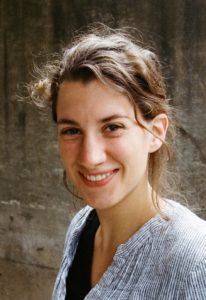 Erin Hoffman is an interdisciplinary artist investigating the subtle transmission of messages. Her work deals with the complexity surrounding conversation via glass sculpture, installation, and video. She graduated with her BFA at Tyler School of Art (2015) and received her MFA at Alfred University (2020). Hoffman has worked and exhibited at the University of Louisville, Pilchuck School of Crafts in Washington, Urban Glass in Brooklyn, and Peter’s Valley School of Craft in New Jersey. A large part of her practice includes traveling to cultivate conversation, assist other artists, and spark curiosity with the unlimited possibilities of glass.
Erin Hoffman is an interdisciplinary artist investigating the subtle transmission of messages. Her work deals with the complexity surrounding conversation via glass sculpture, installation, and video. She graduated with her BFA at Tyler School of Art (2015) and received her MFA at Alfred University (2020). Hoffman has worked and exhibited at the University of Louisville, Pilchuck School of Crafts in Washington, Urban Glass in Brooklyn, and Peter’s Valley School of Craft in New Jersey. A large part of her practice includes traveling to cultivate conversation, assist other artists, and spark curiosity with the unlimited possibilities of glass.
Jurors
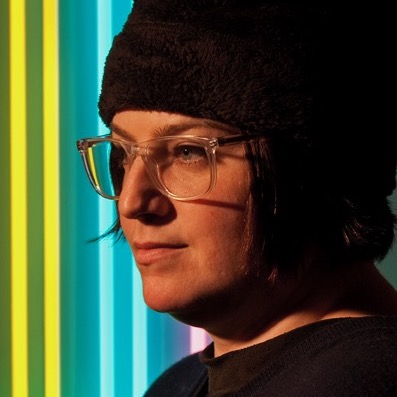
Jen Elek
Jen Elek is a studio artist and educator based in Seattle, WA. Elek investigates interpersonal themes and the notion of community by creating objects and installations of colorful glass and neon light employed as a non-verbal form of communication. Jen has been a member of the Northwest artist community since moving from Bethlehem, PA to Seattle in 1995. Elek has traveled to Canada, Japan, Australia, and throughout the US, teaching glassblowing workshops. Jen has worked for many notable artists, including Dale Chihuly, Sonja Bloomdahl, Ginny Ruffner, Richard Royal, and was a key member of Lino Tagliapietra’s glassblowing team for 15 years. She has also been involved with Northwest arts organizations, including Pilchuck glass school, The Museum of Glass -Tacoma, and Hilltop Artists and has served as a guest lecturer at The University of Washington in Seattle. Her work has been exhibited at The Museum of Glass – Tacoma, Tacoma Art Museum, Pittsburgh Glass Center, Traver Gallery in Seattle, and Schantz Gallery in Stockbridge, MA. Jen maintains a studio in south Seattle with her husband, Jeremy Bert.
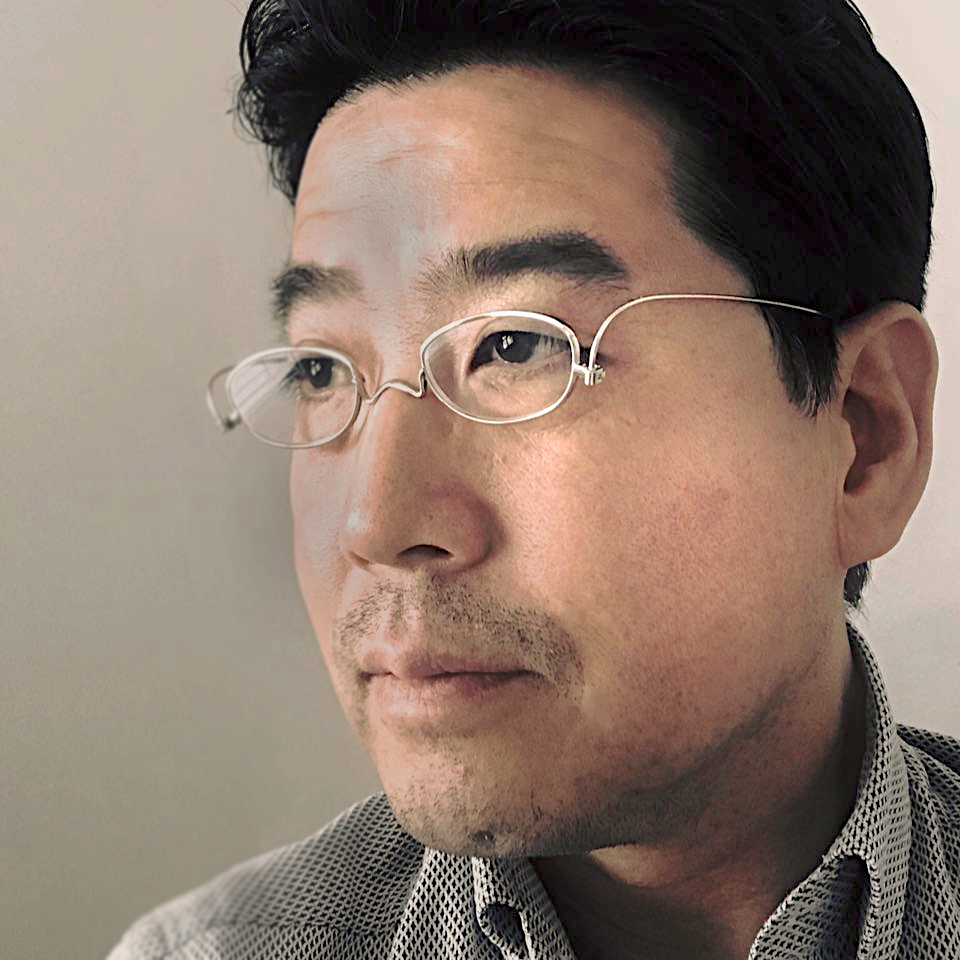
Kazushi Nakada
Kazushi Nakada is an artist from a prominent Japanese ceramist family. He graduated from the Royal College of art in London in 1994. His work has been exhibited around the world, including as part of major European glass art exhibitions in Germany, Italy, Poland, and Sweden. He has lived in Europe for more than 20 years and taught at several universities as a lecturer and professor. Most recently, Kazushi has been focusing on his artwork and exploring new projects. He incorporates a variety of mediums in his work, including ceramics, video/sound/photography, and abandoned objects. One of his latest projects, “My Archaeology”, explores one’s ritualic experience and his or her episodic memory as art and has been exhibited at the Shanghai Museum of Glass in China and Art Front Gallery in Japan.
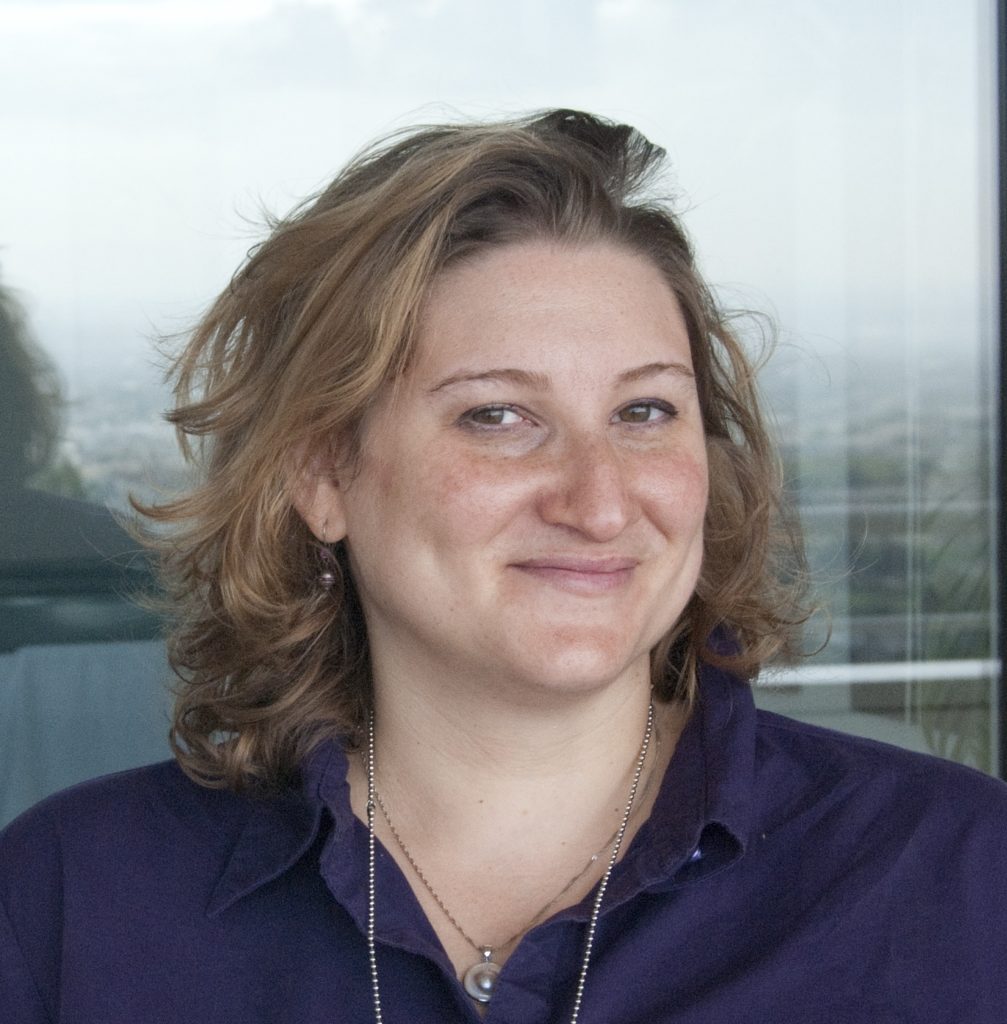
Jenni Sorkin
Jenni Sorkin is Associate Professor of History of Art & Architecture at the University of California, Santa Barbara. She writes on the intersections between gender, material culture, and contemporary art, focusing primarily on women artists and underrepresented media. Her publications include Live Form: Women, Ceramics and Community; Revolution in the Making: Abstract Sculpture by Women Artists, 1947–2016; and numerous essays in journals and exhibition catalogs. She was educated at The School of the Art Institute of Chicago, Bard College, and received her PhD from Yale University. She is a member of the Editorial Board of the Journal of Modern Craft.

